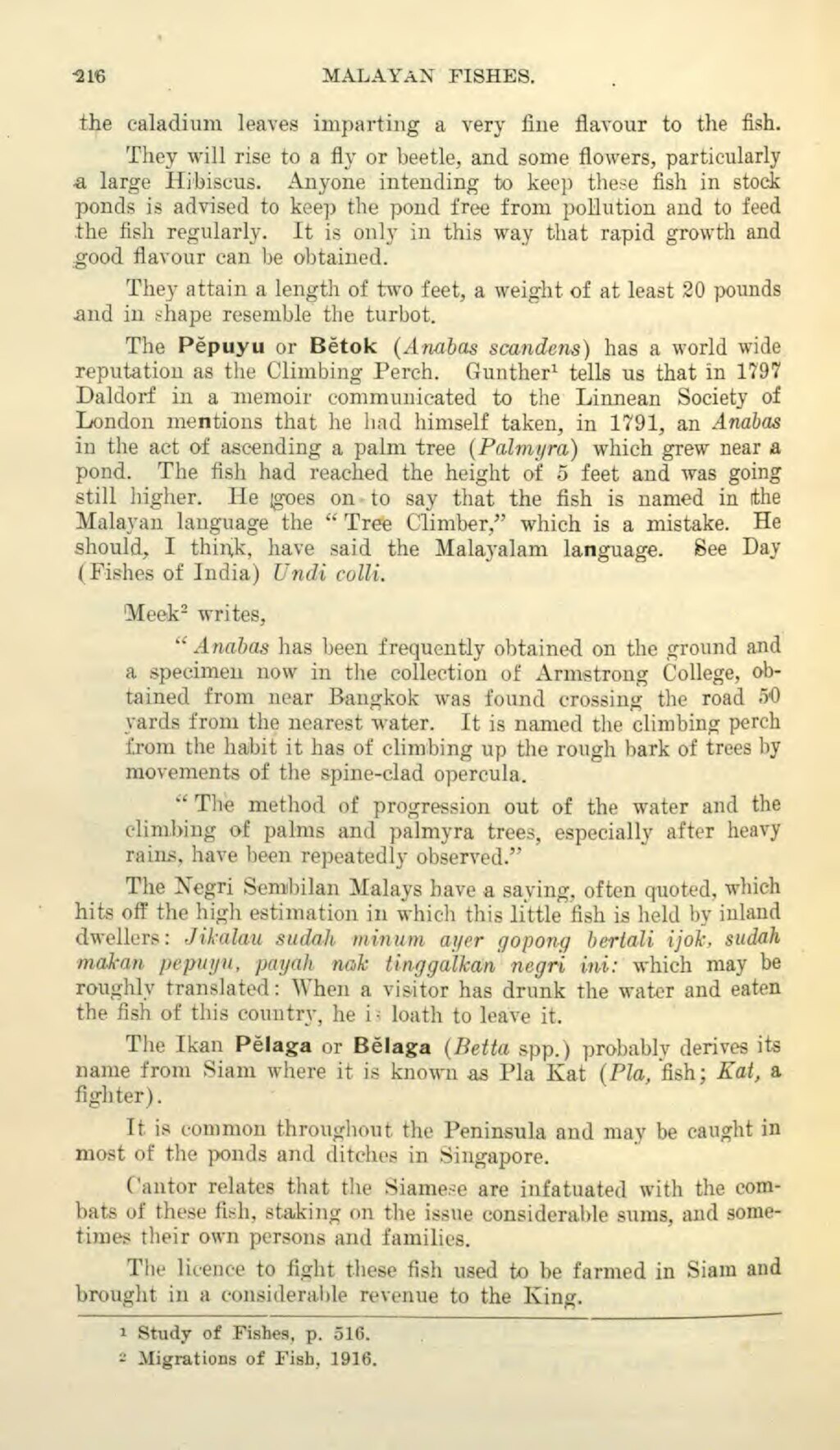the caladium leaves imparting a very fine flavour to the fish.
They will rise to a fly or beetle, and some flowers, particularly a large Hibiscus. Anyone intending to keep these fish in stock ponds is advised to keep the pond free from pollution and to feed the fish regularly. It is only in this way that rapid growth and good flavour can be obtained.
They attain a length of two feet, a weight of at least 20 pounds and in shape resemble the turbot.
The Pěpuyu or Bětok (Anabas scandens) has a world wide reputation as the Climbing Perch. Gunther[1] tells us that in 1797 Daldorf in a memoir communicated to the Linnean Society of London mentions that he had himself taken, in 1791, an Anabas in the act of ascending a palm tree (Palmyra) which grew near a pond. The fish had reached the height of 5 feet and was going still higher. He goes on to say that the fish is named in the Malayan language the "Tree Climber," which is a mistake. He should, I think, have said the Malayalam language. See Day (Fishes of India) Undi colli.
Meek[2] writes,
"Anabas has been frequently obtained on the ground and a specimen now in the collection of Armstrong College, obtained from near Bangkok was found crossing the road 50 yards from the nearest water. It is named the climbing perch from the habit it has of climbing up the rough bark of trees by movements of the spine-clad opercula.
"The method of progression out of the water and the climbing of palms and palmyra trees, especially after heavy rains, have been repeatedly observed."
The Negri Sembilan Malays have a saying, often quoted, which hits off the high estimation in which this little fish is held by inland dwellers: Jikalau sudah minum ayer gopong bertali ijok, sudah makan pepuyu, payah nak tinggalkan negri ini: which may be roughly translated: When a visitor has drunk the water and eaten the fish of this country, he is loath to leave it.
The Ikan Pělaga or Bělaga (Betta spp.) probably derives its name from Siam where it is known as Pla Kat (Pla, fish; Kat, a fighter).
It is common throughout the Peninsula and may be caught in most of the ponds and ditches in Singapore.
Cantor relates that the Siamese are infatuated with the combats of these fish, staking on the issue considerable sums, and sometimes their own persons and families.
The licence to fight these fish used to be farmed in Siam and brought in a considerable revenue to the King.
